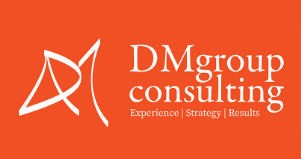Strategic planning is a vital tool for nonprofits. It helps organizations set clear goals, allocate resources wisely, and measure progress. Without a good plan, it’s easy to lose sight of the mission.
In 2024, strategic planning helps nonprofits face new challenges. These include changing donor landscapes and evolving regulations. A strong plan keeps everything on track, ensuring that efforts make a real impact.
Understanding why strategic planning matters is the first step. This article will cover the key components and steps to implement a successful plan. It will also highlight common issues and ways to avoid them. By the end, you’ll have a roadmap to help your nonprofit thrive in 2024.
What Is Strategic Planning for Nonprofits?
Strategic planning for nonprofits is a structured process. It helps organizations decide what they aim to achieve and how to get there. This involves setting long-term goals and figuring out the steps needed to reach them. The process includes collecting data, analyzing it, and making decisions based on that information.
Strategic planning is crucial for nonprofits because it provides direction and focus. It ensures that everyone in the organization is working towards the same goals. Without a plan, it’s easy to waste resources and lose sight of the mission. A good plan helps measure progress and make adjustments as needed.
Key Components of Nonprofit Strategic Planning
Mission and Vision Statements:
The mission statement explains why the nonprofit exists. It outlines the organization’s purpose. The vision statement looks to the future, describing what the organization hopes to achieve. Both are essential for guiding the strategic plan.
SWOT Analysis:
SWOT stands for Strengths, Weaknesses, Opportunities, and Threats. This analysis helps nonprofits understand their internal and external environments. It identifies what the organization does well and where it can improve. It also highlights external opportunities and challenges.
Setting Goals and Objectives:
Goals are broad, long-term aims that the nonprofit wants to achieve. Objectives are specific, measurable steps to reach those goals. Clear goals and objectives make it easier to track progress and stay focused.
Developing Action Plans:
Action plans break down goals into actionable steps. They detail what needs to be done, who will do it, and when. These plans also outline the resources needed to execute the actions.
Measurements and Metrics:
Metrics are the tools used to measure progress. They help assess whether the nonprofit is moving towards its goals. Common metrics include the number of people served, funds raised, and program outcomes. Tracking these metrics ensures accountability and helps make data-driven decisions.
Steps to Successfully Implement a Strategic Plan
Establishing the Planning Team:
The first step is to gather a diverse team. This team should include board members, staff, and sometimes even volunteers. Each member brings a unique perspective, which is valuable for creating a well-rounded plan.
Gathering Data and Insights:
Collect relevant data to inform your plan. This can include financial reports, program evaluations, and feedback from stakeholders. The information gathered helps identify strengths and weaknesses, forming the basis for strategic decisions.
Engaging Stakeholders:
Involve stakeholders throughout the planning process. This includes donors, beneficiaries, and community partners. Their input ensures the plan meets the needs of those it aims to serve.
Drafting and Approving the Plan:
After gathering data and input, draft the strategic plan. Outline goals, objectives, and action steps. Once the draft is complete, present it to the board for approval. Having board buy-in is crucial for successful implementation.
Communicating the Plan to All Members:
Once the plan is approved, communicate it to the entire organization. Ensure everyone understands the goals and their role in achieving them. Clear communication creates buy-in and commitment to the plan.
Monitoring and Adjusting the Plan:
Implement the plan and monitor progress regularly. Use the established metrics to assess performance. Make adjustments as needed to stay on track and address any challenges that arise.
Common Pitfalls and How to Avoid Them
Short-term Focus vs. Long-term Vision:
One common pitfall is focusing too much on the short-term. While immediate needs are important, a strategic plan should also consider the long-term vision. Balance the two to ensure sustained success.
Ignoring Stakeholder Input:
Skipping stakeholder input can lead to a plan that doesn’t address real needs. Engage stakeholders early and often to create a more effective plan.
Lack of Clear Metrics:
Without clear metrics, it’s hard to measure progress. Define specific, measurable metrics to track success. This helps keep the organization accountable and on course.
Inadequate Resource Allocation:
Failing to allocate resources properly can derail a strategic plan. Ensure that the budget, staff, and other resources align with the plan’s goals. Proper allocation supports successful implementation.
Failure to Review and Revise Regularly:
A strategic plan should be a living document. Regular reviews and revisions are necessary to keep it relevant. Schedule regular check-ins to assess progress and make needed adjustments.
Conclusion
Strategic planning is essential for nonprofits. It provides direction and helps align resources with the mission. By understanding the key components and implementing the steps outlined, your nonprofit can create a solid strategic plan. Avoiding common pitfalls will ensure the plan remains effective and sustainable.
At DM Group Consulting, we specialize in helping nonprofits create and implement successful strategic plans. Our expertise ensures your organization stays on track and achieves its goals. Contact us today to learn how we can support your nonprofit’s journey toward success through our nonprofit consulting services.




